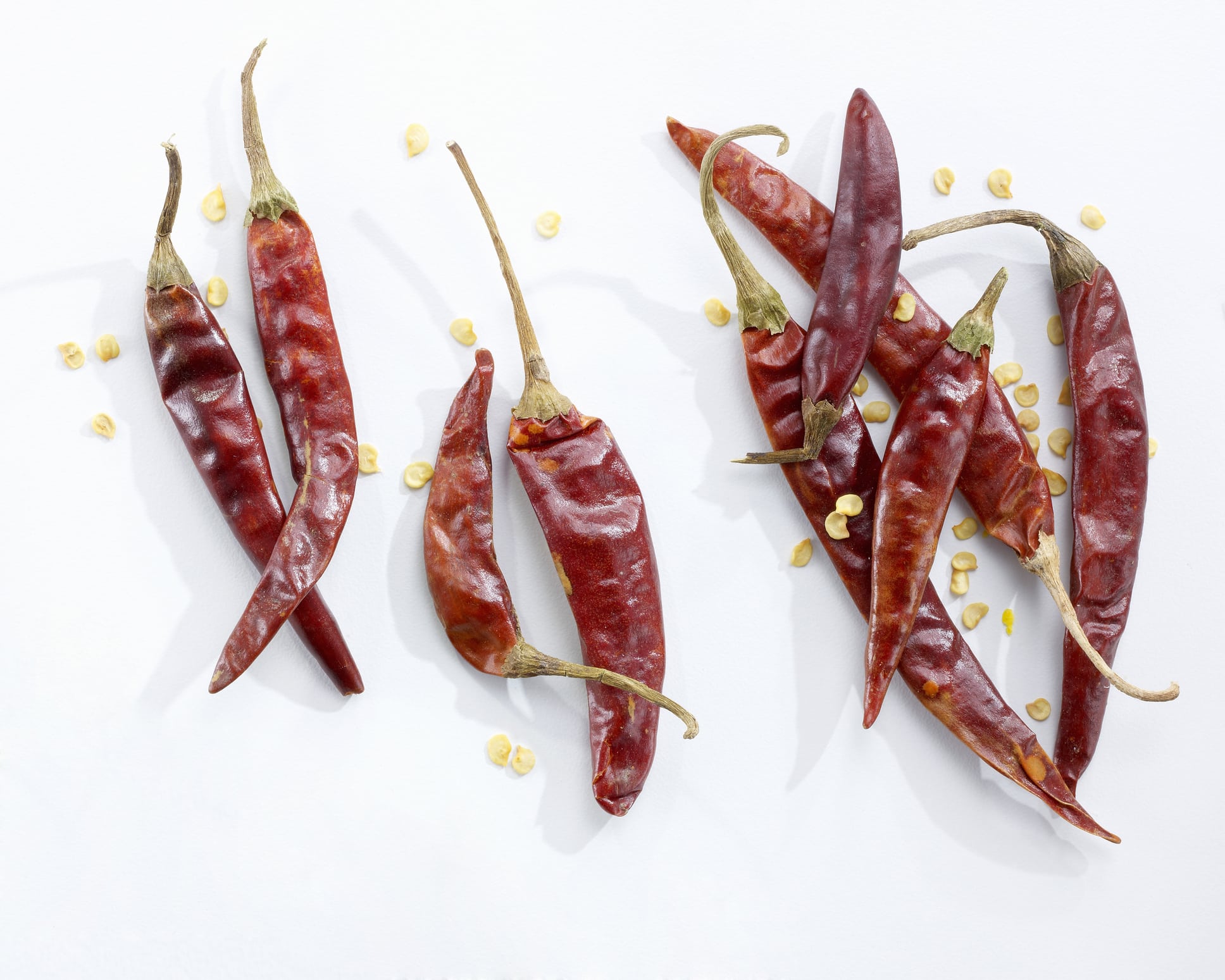Chile 101: Everything You Need To Know About This Key Ingredient in Many Recipes
First things first, what is a chile? The noun chile comes from the náhuatl word “chilliy” and it refers to the many kinds of hot peppers under the Capsicum family. The fruits of these plants, yes it is a fruit, not a vegetable, are, as you may have guessed, famous for their heat.
As a good chile-lover will know, there are many levels of spiciness, but one thing they all have in common is they all contain capsaicin, a natural chemical that causes a range of effects that can go from a subtle sting on your tongue to leaving you in tears.
To understand levels of spiciness, the Scoville scale is the most used measurement when it comes to chiles. To get an idea, a red Habanero would score between 150,000 and 350,000 SHU (Scoville Heat Units) while a regular jalapeño would be between 2,500 and 8,000 SHU.
Keep reading this easy guide to learn more about the most popular chiles in Mexican cuisine, where they come from, how spicy they are and what to use them for.
Poblano

Poblano chile is the most consumed kind of chile in Mexico. It gets its name from the region it comes from, Puebla. Most precisely the Tehuacán valley.
This pepper is among the biggest and you´ll recognize it because of its shape, shiny dark green color, and meaty texture. It is mostly consumed fresh. Because of its size and the fact that it’s not too spicy, when it comes to cooking this chile is the go-to for any recipe that involves stuffed peppers (chiles rellenos), rajas, and also to make the uber-famous chiles en nogada.
Ancho Chile

Ancho chiles are also known as just “anchos” and they are essentially dried poblano peppers. These peppers look green when they’re unripened. To qualify as anchos they have to be ripped on the plant and then dried once they’re picked from the plant. It is in this dehydrated state that they get their characteristic blackish color.
These chiles are sweeter than they are spicier (only 1000-1,500 SHU). They get sweeter and smokier because of the ripening and drying process and that’s why they are a key ingredient in dishes like red pozole and the very popular carne asada.
Jalapeño

Jalapeños are probably the best-known chiles in the capsaicin family on this side of the border, although they’re originally from the state of Jalapa, in Mexico, and that’s where the name comes from.
The spiciness in jalapeños can vary widely depending on your bud tastes and also external factors such as the weather conditions or the soil where it grew. With between 2,500 and 8,000 SHU, most chile-lovers would give it a mild or moderate category.
Jalapeños are so popular in the United States you can easily find them on any menu at any restaurant, and also at any grocery store. Some traditional recipes they’re used in are salsa verde, jalapeño poppers, or chiles toreados (mixed with chiles poblanos).
Habanero

Habanero chiles are among the spiciest of the family in Mexican cuisine. There are many different kinds of habaneros (red, orange, yellow, purple, Francisca, chocolate…) but one of the most popular and easier to find in the United States is the orange one. It usually stands between 100,000 to 350,000 SHU, so yeah, it’s pretty spicy.
Although its name means literally “from Habana,” its origins are in the Amazon region in South America from where they were exported to the rest of the world. Today Mexico is the main producer of this kind of pepper, in particular the Yucatan peninsula. That’s why this pepper is one of the quintessential ingredients in Yucatecan cuisine, mostly to make salsas that accompany beloved dishes like cochinita pibil.
Chile de Arbol

No, Chile de arbol does not grow in trees. Like all chiles in the Capsicum family, it grows in bushes, but the bush this particular pepper grows in is bigger than most. Hence, the tree reference in its name. Because of their shape, people also call them Bird’s beak chiles, Rat’s tail chiles, and alfilerillos.
You’ll mostly see them in their dried form, especially to make delicious salsa de chile de arbol, and also as a beloved condiment in many soups, stews, and hot sauces.
Serrano

Serrano is Mexico’s second most produced kind of chile (the first is jalapeños). This variety originally comes from the north of Puebla and Hidalgo, Mexico, and it got its name most likely because it grows in high mountainous regions, a.k.a sierras.
Other popular names for this pepper are chile tampiqueño, costeño o altamira. Serrano peppers are an absolute must in any Mexican pantry, they are an essential ingredient in hundreds of traditional platillos, salsas, and even cocktails.
Handle with care
No matter which one is your favorite, here’s one golden rule if you’re going to cook any of them: when you’re cutting and prepping chiles it’s always a good idea to wear gloves. The capsaicin that gives them their spiciness can transfer to your hands and if you rub them on your eyes or skin, it will cause a burning sensation that, trust us, is no fun.




